Chainsaws are handy, hard-working tools. They can also be unwieldy and dangerous. These are our favorite tips for safe and effective chainsawing.
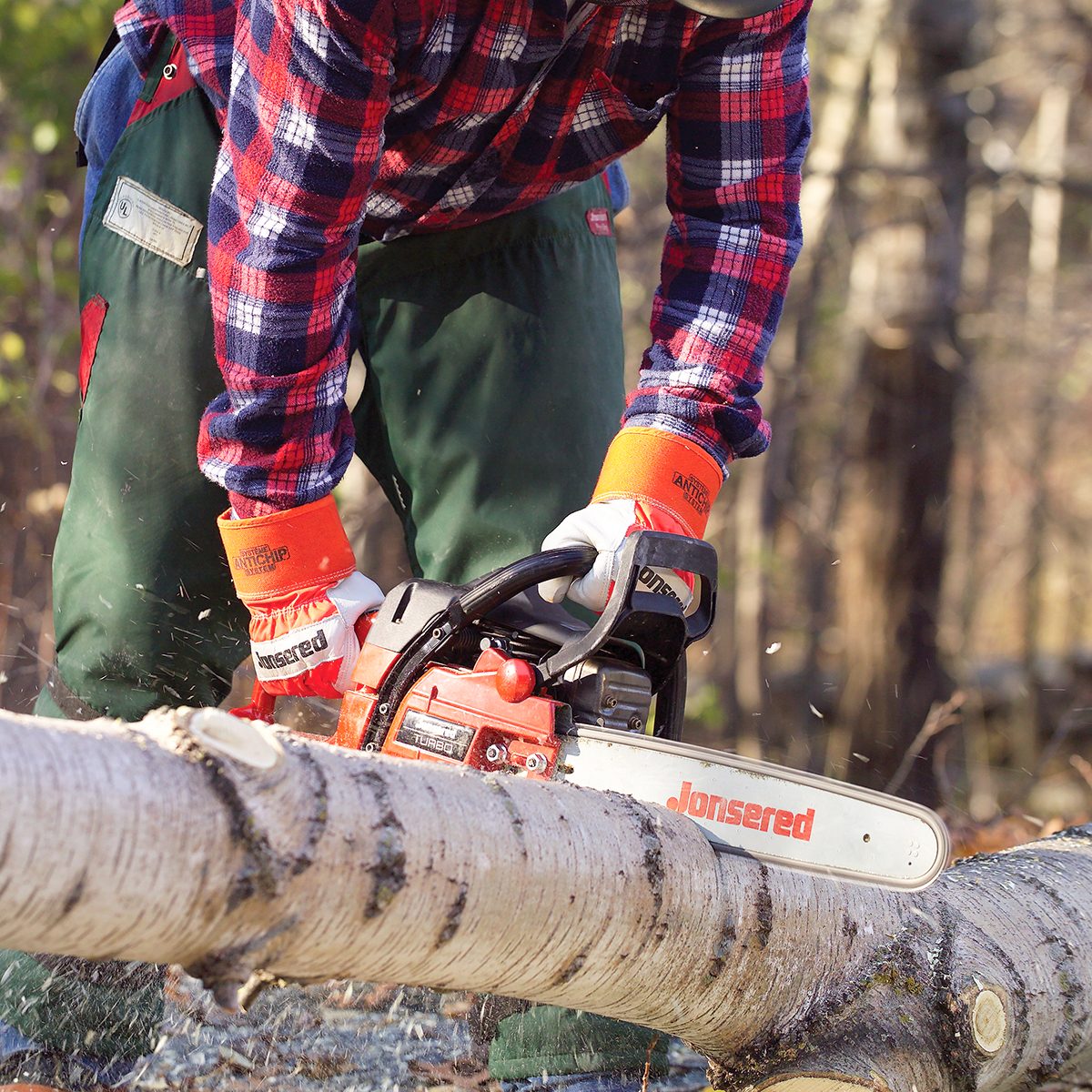
Use Your Chainsaw Safely and Effectively With These Tips


Chainsaw Blade Guard
Protect a chainsaw blade with 3/4-in. foam pipe insulation. Wrap the insulation around the blade and strap it tight with a couple of rubber bands.
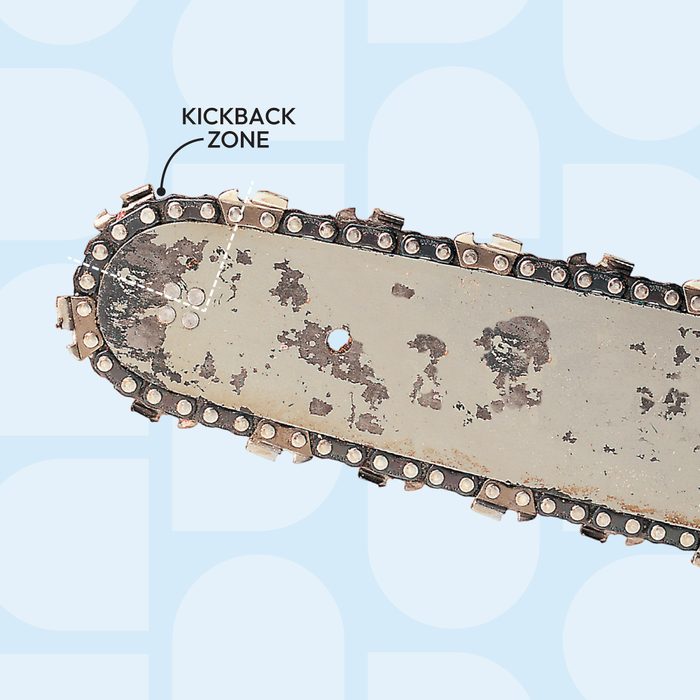
Avoid the Kickback Zone
Cutting with the chain on the bottom of the bar is the most common and natural-feeling way to cut. The saw pulls slightly and is easy to control by maintaining a firm grip. Cutting from the underside of a branch requires you to cut with the top of the bar. This is a little unnerving at first because the saw pushes toward you. But it’s safe as long as you’re well-braced and follow all other precautions.
However, there’s one spot on the bar that you should carefully avoid. This spot, called the kickback zone, is the top half of the bar’s tip. If the kickback zone comes in contact with something while the chain is moving, the saw will kick up and back toward you. That’s why modern chainsaws are equipped with a chain brake designed to stop the chain if a kickback occurs. It’s also the reason you should always maintain an encircling grip with your thumb around the front handle. But the best defense is to avoid the kickback zone.
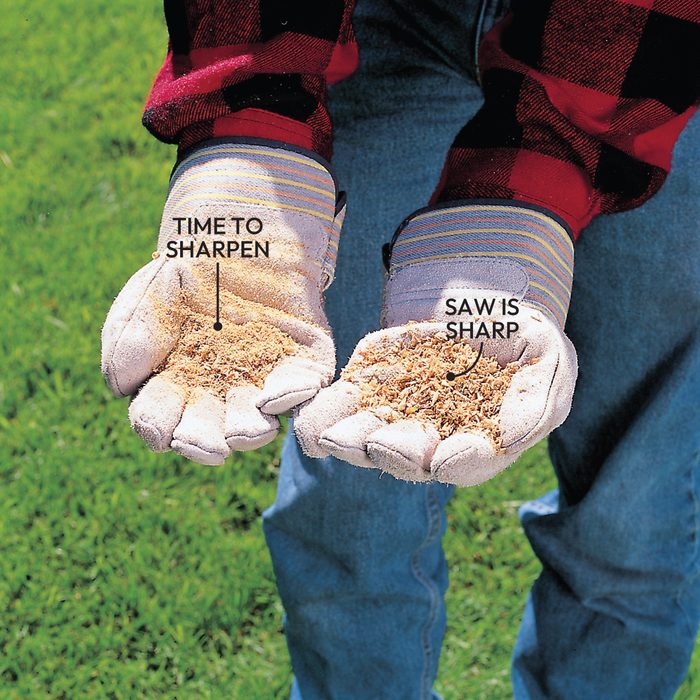
How to Know When It’s Time to Sharpen
A sharp chain cuts well with very little force on the bar, while a dull chain tends to ride in the cut without deepening it. If you’re forcing the saw to persuade it to cut, the chain is dull and needs sharpening. Also, when the chain spits out dust instead of chips, it’s time to grab a round file and sharpen the cutters.
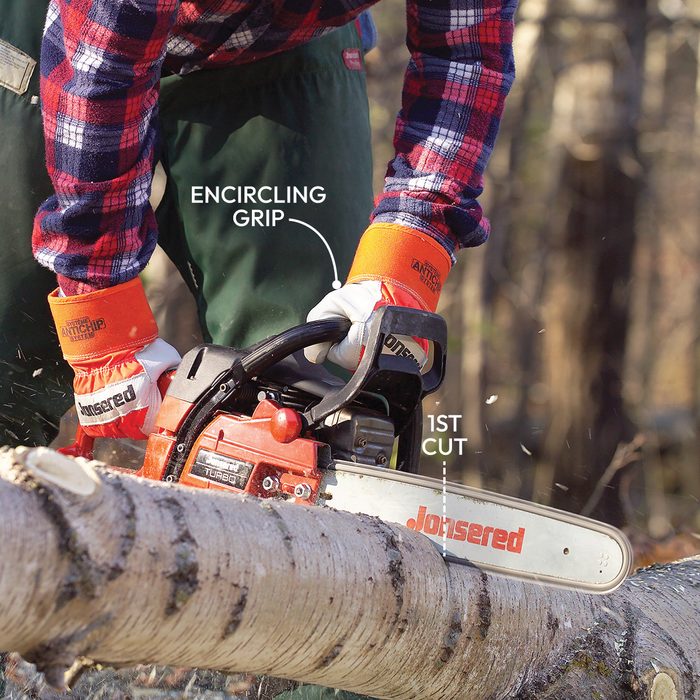
Prevent Injuries
The most common chainsaw injuries to the thigh and left arm can be virtually eliminated with just two simple precautions.
- First, always wrap the thumb of your left hand around the front handle while you’re cutting. This encircling grip keeps the saw under control in the event of a kickback.
- Second, when you move from place to place with the saw running, even if it’s only to the next branch, always remove your right hand from the back handle and carry the saw at your side with your left hand holding the front handle. Then if you trip or stumble, there’s no way the saw’s engine can accelerate and start the chain spinning.
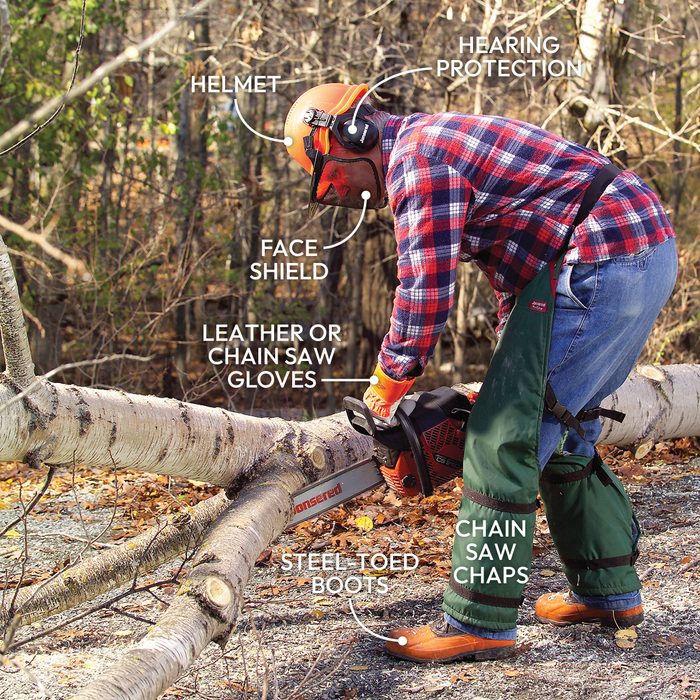
Wear the Right Safety Gear
Buy safety gear and wear it. Special chaps will often stop a moving chain and save your thigh. A helmet with a face screen and ear protection is a convenient way to keep head, eye and ear protection handy in one comfortable package. Wear steel-toed, cut-resistant boots and a long-sleeved shirt to protect against the inevitable scratches.
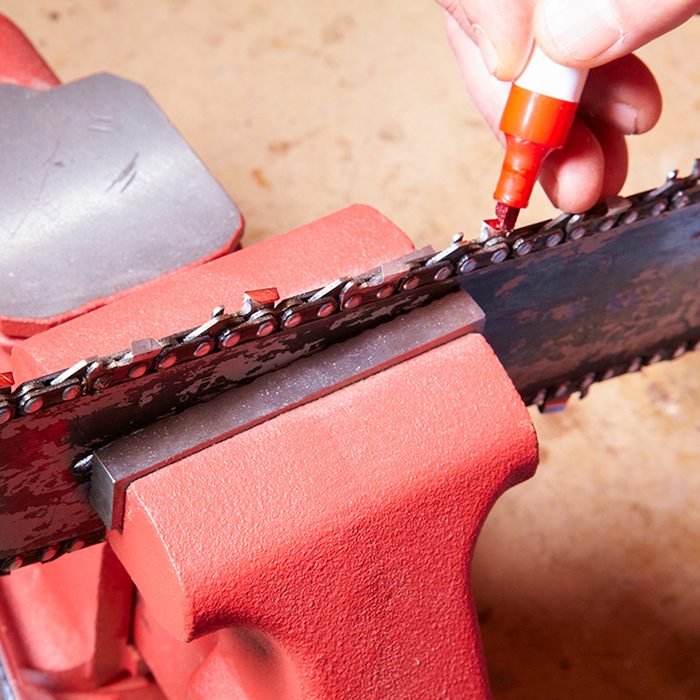
Chain Saw Sharpening Made Easier
When you’re sharpening your chainsaw, it’s easy to get confused about which teeth you’ve sharpened and which ones you haven’t as you pull the chain around the bar. To prevent confusion, just mark each tooth with a permanent marker after you’ve sharpened it.
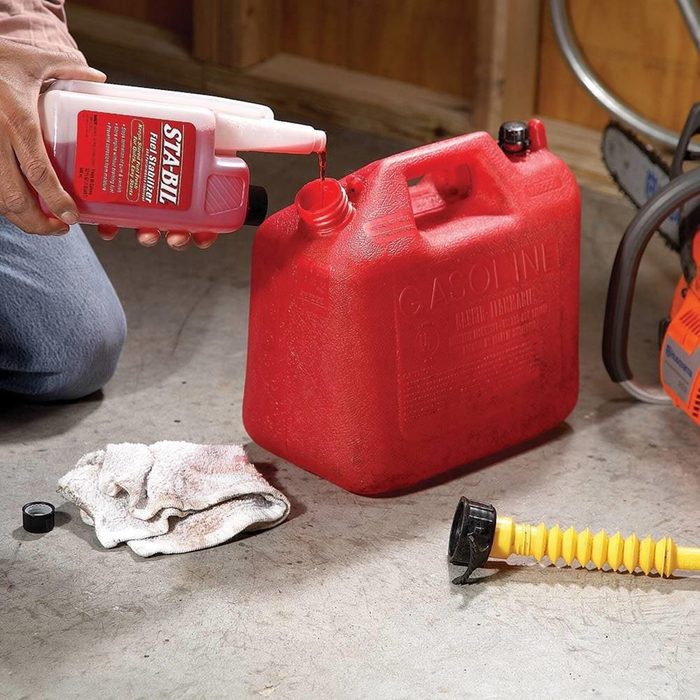
Treat Gasoline When You Buy It
Do you know how much the average small-engine repair costs? We don’t either, but it’s a lot! And a huge source of revenue for small-engine repair shops is fixing to engines that were operated with old gas. Modern gas formulations just don’t last as long as earlier ones did. And when gas starts to break down, it not only makes the engine hard to start but also gunks up the whole system with gum and varnish.
So, if you keep gas on hand to run your chainsaw, treat the gas with a stabilizer right after you buy it. That’ll save you big money on repair bills later.
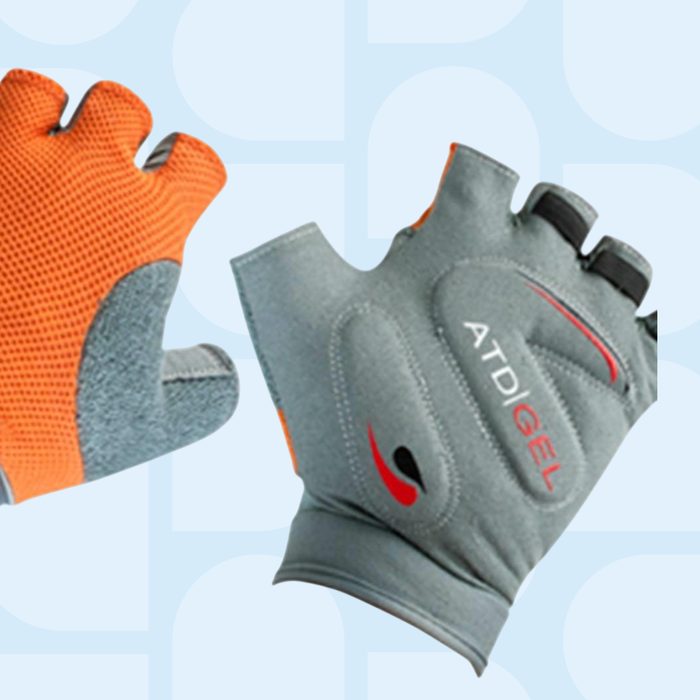
Bike Gloves for Power Tools
The gel-filled gloves that bicyclists use are great for absorbing the vibration of power tools such as chainsaws, sanders and lawnmowers.
Photo: Aero Tech Designs, Inc.
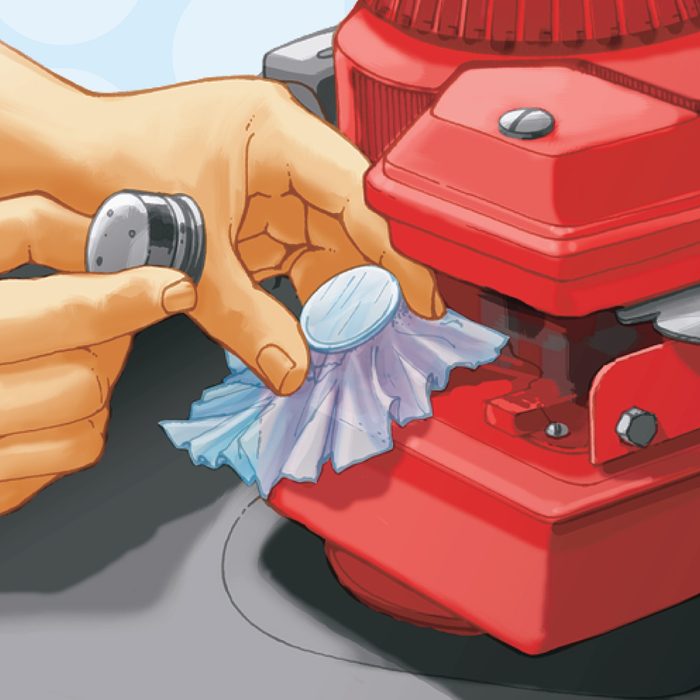
Gas Tank Leak Stopper
If you have to tilt your chainsaw (or lawn mower) to make repairs, here’s how to prevent the gasoline from running out the vent cap holes of the engine. Place a piece of plastic wrap over the opening, then screw the cap back on.
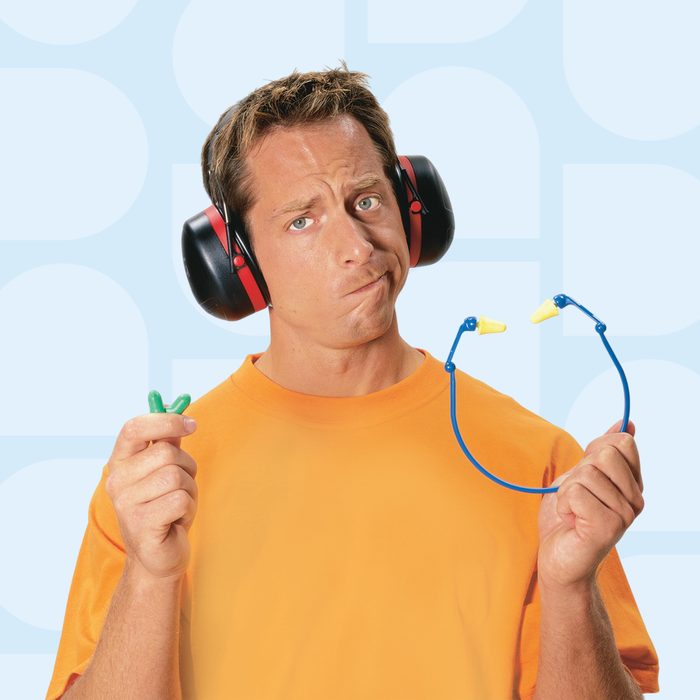
Hearing Protection: What Should I Use?
The risk of hearing damage is highest for those who use loud equipment every day. But if you use a shop vacuum, leaf blower or circular saw without hearing protection, you’re doing permanent damage every time. And that’s just dumb because protecting your hearing is so easy. The goal is to reduce noise levels to 90 decibels. All forms of hearing protection—earmuffs, disposable foam earplugs, reusable plugs—are adequate for most noise. With super-loud equipment like framing nailers and chainsaws, it’s smart to use both plugs and earmuffs.




















